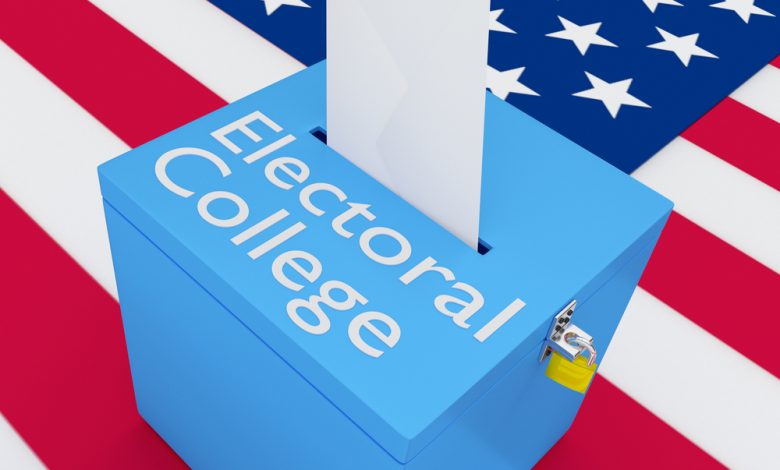
Presidential elections are held once every four years in the United States. With an election coming up within a few weeks, it’s time once again to dive into the differences between the Electoral College vs. popular vote and why America handles elections the way it does.
The critical difference between the two systems is that the popular vote represents direct democracy, while the electoral vote is a representative republic.
Table of Contents
What is the Electoral College? What Are Electoral Votes?
The founding of the Electoral College dates back to the Philadelphia convention of 1787. The Electoral College is made up of delegates chosen by the United States and District of Columbia. There are around 538 electors in the Electoral College. The distribution of these delegates is decided upon by the House of Representatives and Senate.
The Electoral College was one of the Great Compromises of the Founding Fathers. Some of them felt that the president should be elected through a congressional vote. Leaving things to the popular vote would increase the chances of a populist president having too much power. Others argued against this, believing that such a system could easily create tyranny. They were worried that someone would effectively schmooze their way into becoming president by cozying up to the right people in Congress. America had just escaped the grasp of one tyrant and was in no hurry to be ruled by another.
What are the Advantages of the Electoral College?
1. Smaller states have as much of a say as larger states and are represented fairly
2. The Electoral College helps prevent large parties from influencing an election through fraud
3. The College acts as a check and balance for the presidential administration
4. It protects the cornerstone of American Federalism
What are the Disadvantages of the Electoral College?
1. The system doesn’t promote direct democracy
2. The system doesn’t penalize states for having low voter turnout
3. The system discourages people from voting, both for and against, parties with a majority of voters
What is the Popular Vote?
The popular vote is simple to understand. The popular vote dictates that the candidate with the most votes is the winner. The popular vote represents direct democracy and places all the power in the hands of voters.
The popular vote gives citizens the right to vote for their chosen leader. The one who gets the most votes becomes the president. There are no election groups under the popular vote, and the system provides small parties with as much of a chance as big parties as it doesn’t favor party size.
The Main Differences Between Electoral College vs. Popular Vote
1. The Electoral College creates a representative republic while the popular vote creates direct democracy
2. The Electoral College tends to favor large majority parties while the popular vote provides all parties with equal footing
3. Gerrymandering is more prevalent with the Electoral College while it isn’t possible under the popular vote
4. The Electoral College requires voting districts while the popular vote doesn’t
5. Citizens vote for their delegates in the Electoral College system while they vote directly for their representative with the popular vote
Are There Similarities Between the Two Systems?
1. Both systems are integral to electing leaders
2. Both systems favor minority rights by giving everyone equal power
3. Both involve the use of government oversight organizations
Do We Need the Electoral College?
Every election brings with it more questions over whether the Electoral College should be dismantled or not. The 2016 election was a standout moment for the argument as Hilary Clinton won the popular vote but lost the electoral vote. Her husband, Bill Clinton, was once on the other end of that argument – winning the electoral vote but losing the popular one.
There are certainly flaws in the Electoral College. There are issues that must be resolved, such as gerrymandering. However, the Electoral College still represents one of the best ways for America to conduct elections. So long as America remains a two-party system with voters spread across all 50 states, the country requires a representative system like the Electoral College. Other countries are actually arguing in favor of adopting a representative approach like the one America has, with some countries already adopting Proportional Representation systems that work on a similar level. America needs this kind of proportional representation when there is such a disparity between state populations.





Leave a Reply
Thank you for your response.
Please verify that you are not a robot.